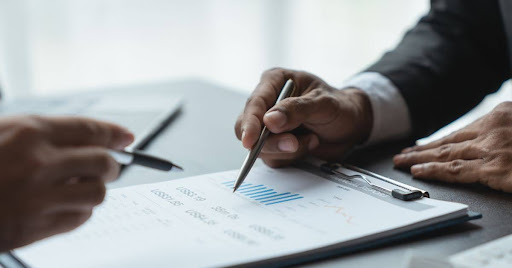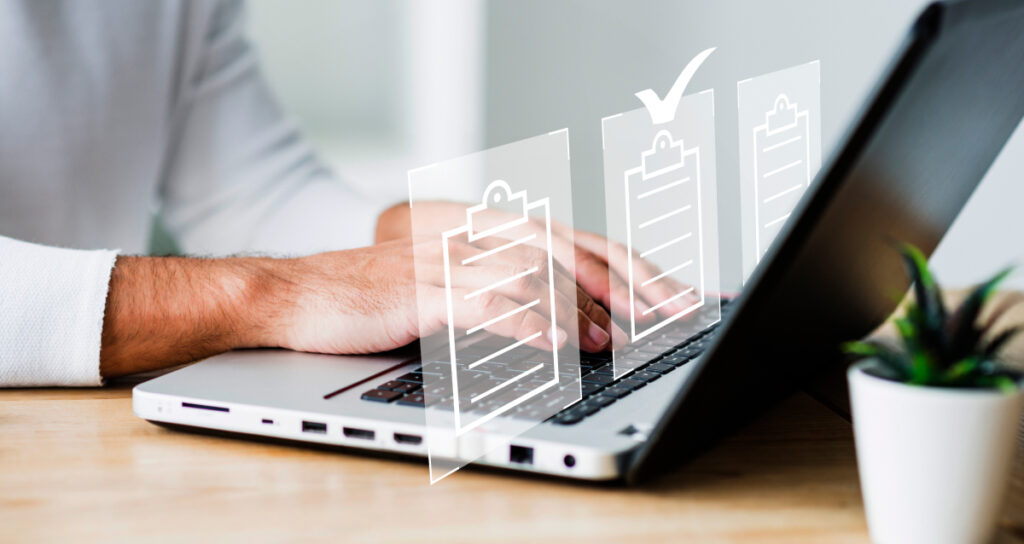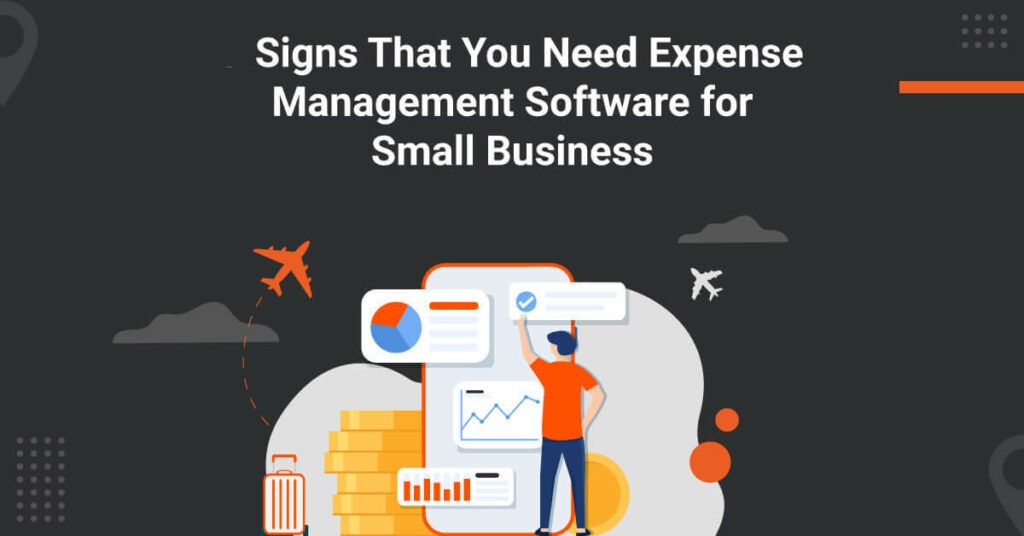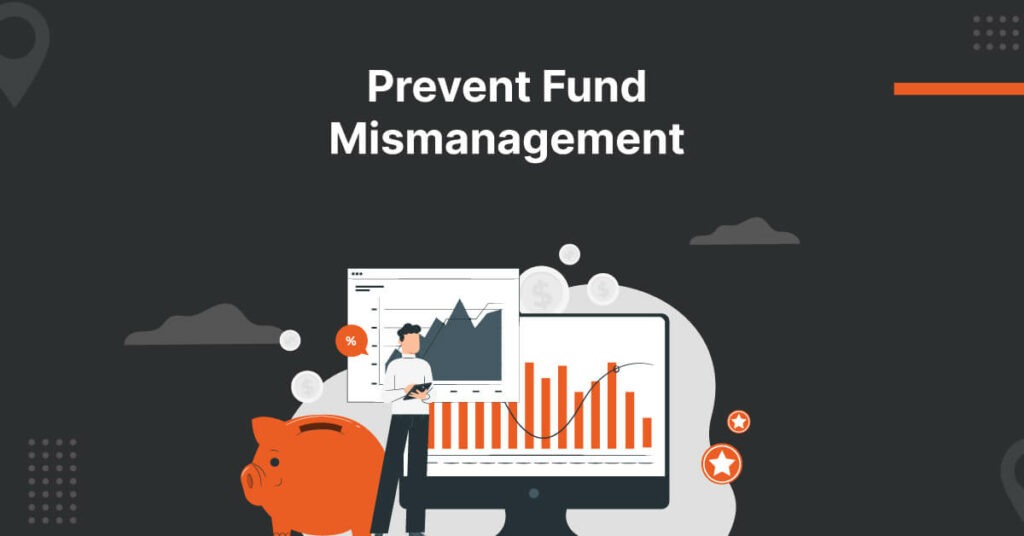
In business and finance, maintaining transparency and understanding your organisation’s financial health is critical. One of the most effective tools for achieving this is the balance sheet. This financial statement summarises a company’s financial position and provides a foundation for informed decision-making.
This blog delves deeply into the balance sheet, its significance, types, components, and how to prepare one. Additionally, we’ll explore the consequences of not maintaining a balance sheet and its benefits and provide an overview of the typical balance sheet format.
What is a Balance Sheet?
A balance sheet is a crucial financial statement summarising a company’s assets, liabilities, and equity at a specific time. It provides insights into what the business owns, owes, and the shareholders’ equity. In other words, a balance sheet provides information about a company’s assets, liabilities, and residual value after deducting liabilities from assets.
The term ‘balance’ in the balance sheet refers to the fundamental equation it follows:
Assets = Liabilities + Equity.
This equation ensures that the balance sheet is balanced. It highlights the company’s financial stability and operational efficiency. Investors, lenders, and internal management often rely on the balance sheet to evaluate a business’s financial standing, make investment decisions, or secure credit.
Importance of a Balance Sheet
The balance sheet is more than just numbers on a page. It is a critical document for maintaining transparency and making strategic decisions. Its importance lies in the following areas:
1. Understanding Financial Health
The balance sheet offers a comprehensive snapshot of a company’s financial position at a specific point in time. It provides a clear view of:
- Assets: What the company owns (e.g., cash, inventory, property).
- Liabilities: What the company owes (e.g., loans, accounts payable).
- Equity: The net worth of the company (assets minus liabilities).
By analysing these elements, stakeholders can assess how efficiently the company operates, understand its liquidity, and assess its overall stability. For instance, a company with more current assets than current liabilities is considered financially healthy.
2. Guiding Investment Decisions
Investors scrutinise the balance sheet to evaluate the company’s financial viability and risk levels. Key metrics derived from the balance sheet, such as:
- Debt-to-equity ratio (a measure of financial leverage).
- Return on equity (a measure of profitability relative to shareholders’ equity).
These help investors determine whether the company is a safe and profitable investment. A strong balance sheet indicates a company that can withstand economic downturns and generate returns, making it more attractive to investors.
3. Establishing Creditworthiness
Lenders, such as banks and financial institutions, use the balance sheet to decide whether to extend credit or loans. They assess:
- The ratio of liabilities to assets to gauge the company’s leverage.
- The availability of liquid assets to cover short-term debts.
A well-maintained balance sheet with a manageable debt load and substantial equity reassures lenders that the company can meet its debt obligations. Thus making it more likely to secure financing on favorable terms.
4. Tracking Financial Trends
Comparing balance sheets over multiple periods reveals financial trends and patterns, such as:
- Growth in assets could indicate expansion.
- Increasing liabilities, which might signal potential cash flow problems.
- Changes in retained earnings reflect profitability trends.
By identifying these trends, businesses can make informed decisions about future investments, cost-cutting measures, or restructuring efforts.
5. Ensuring Regulatory Compliance
Companies must adhere to accounting standards and regulations, such as Generally Accepted Accounting Principles (GAAP) or International Financial Reporting Standards (IFRS).
- An adequately prepared balance sheet ensures compliance with these legal requirements.
- It also demonstrates transparency and accountability. This is critical for public companies, as regulators and stakeholders frequently review financial statements.
Failure to maintain a compliant balance sheet can lead to penalties, loss of investor confidence, and reputational damage.
6. Facilitating Strategic Planning
The balance sheet serves as a foundational tool for long-term strategic planning. It helps businesses:
- Identify surplus or underutilised assets that can be redirected to more profitable ventures.
- Assess funding needs for new projects by analysing current liquidity and debt levels.
- Plan for contingencies by understanding liabilities and their maturity dates.
By leveraging this information, companies can allocate resources more effectively to achieve their goals.
Components of a Balance Sheet
A well-structured balance sheet comprises three primary components: assets, liabilities, and equity. Each provides valuable insights into the company’s financial framework.
Mentioned below are the essential components of a balance sheet:
1. Assets
Assets represent everything the company owns or controls that has economic value. They are broadly divided into:
Current Assets
These are short-term resources expected to be converted into cash within a year. Examples include:
- Cash and cash equivalents
- Accounts receivable
- Inventory
- Prepaid expenses
Non-Current Assets
These long-term resources will benefit the company for over a year. Examples include:
- Property, plant, and equipment (PPE)
- Long-term investments
- Intangible assets such as patents and trademarks
2. Liabilities
Liabilities are the financial obligations or debts the company owes to others. Like assets, they are categorised as:
Current Liabilities
Short-term debts due within a year, such as:
- Accounts payable
- Short-term loans
- Accrued expenses
Non-Current Liabilities
Long-term obligations that extend beyond a year, such as:
- Bonds payable
- Long-term loans
- Lease obligations
3. Equity
Equity represents the shareholders’ residual interest in the company after deducting liabilities. It includes:
- Common Stock: The value of shares issued to investors.
- Retained Earnings: Profits that are reinvested in the company rather than distributed as dividends.
Together, these components of a balance sheet ensure that the balance sheet provides a comprehensive overview of a company’s financial status.
How to Prepare a Balance Sheet?
After understanding what is a balance sheet you need to prepare it. Preparing a balance sheet may seem daunting initially, but breaking it down into a step-by-step process simplifies the task.
Here’s how to prepare a balance sheet:
1. Determine the Reporting Date
The first step on how to prepare a balance sheet is to select a specific reporting date. This date represents the snapshot of the company’s financial position. It is usually at the end of a fiscal period, such as a month, quarter, or year. Choosing the correct date is essential, as it aligns the balance sheet with other financial reports for consistency.
2. Identify and List Assets
Assets are categorised into two types:
- Current assets : Items expected to be used or converted into cash within a year, like cash, accounts receivable, and inventory.
- Non-current assets : Long-term resources like property, equipment, and intangible assets such as patents. Each asset is listed with its value, ensuring accurate documentation of what the company owns.
3. Record Liabilities
Liabilities are also divided into:
- Current liabilities : Obligations due within a year, such as accounts payable and short-term loans.
- Long-term liabilities : Debts or obligations that extend beyond a year. Like bonds payable and long-term loans. Recording all liabilities helps provide a clear picture of the company’s financial obligations.
4. Calculate Equity
Equity represents the owners’ claim on the company after deducting liabilities from assets. It includes:
- Shareholder investments: Funds invested by owners or shareholders.
- Retained earnings: Profits reinvested into the business over time. Equity calculation is crucial to show the net worth of the company.
5. Verify the Balance
The balance sheet must follow the fundamental accounting equation:
Assets = Liabilities + Equity.
If the two sides don’t match, it indicates errors in data entry or calculations, which must be addressed to ensure the document’s accuracy and reliability.
6. Format the Document
Finally, present the data in a clear, organised, and standardised balance sheet format. Use separate sections for assets, liabilities, and equity. Include subtotals and a final total to make the document easy to read and interpret. This professional balance sheet format ensures stakeholders can quickly understand the company’s financial position.
What Happens if You Don’t Prepare a Balance Sheet?
Now that we know what is a balance sheet and its importance, let us understand what are the repercussions of its absence. The absence of a balance sheet can lead to severe consequences for any organisation. They can be:
- Lack of Financial Clarity: Businesses may struggle to assess their financial health without a balance sheet.
- Limited Access to Funding: Lenders and investors require financial statements like balance sheets to make informed decisions.
- Poor Decision-Making: Management may make ill-informed strategic choices without a clear understanding of assets and liabilities.
- Compliance Issues: Failure to maintain a balance sheet could result in legal penalties and regulatory breaches.
- Missed Opportunities: Potential investors and partners might need more financial transparency to collaborate.
For companies aiming for sustainable growth, preparing a balance sheet is non-negotiable.
Types of Balance Sheets
A balance sheet is not a one-size-fits-all document. Different types are tailored to meet specific needs, whether it’s for internal analysis, external reporting, or forecasting. Understanding these variations is crucial for businesses to effectively present and interpret financial data.
Below, we delve deeper into the main types of balance sheets:
1. Classified Balance Sheet
The classified balance sheet is the most commonly used type. It organises assets and liabilities into categories based on their characteristics, making assessing a company’s financial position easier.
Key Features:
Current vs. Non-Current:
- Current Assets : Cash, accounts receivable, and inventory (expected to be used or converted into cash within a year).
- Non-Current Assets : Long-term investments, property, plant, and equipment (used over a longer timeframe).
- Current Liabilities : Accounts payable and short-term debts (due within a year).
- Non-Current Liabilities : Bonds and long-term loans (due after a year).
Purpose:
This balance sheet format is ideal for presenting detailed financial information to stakeholders, helping them understand liquidity and long-term financial stability.
2. Comparative Balance Sheet
A comparative balance sheet showcases financial data for multiple reporting periods. This allows businesses to track performance over time and identify trends.
Key Features:
- Multiple Columns : Each column represents a different period (e.g., last quarter, current quarter, or year-over-year data).
- Highlighting Changes : Differences between periods are often highlighted to emphasise growth, decline, or stability.
Purpose
This type is particularly useful for management and investors who need to analyse trends, make projections, and assess the impact of strategic decisions.
Example:
A comparative balance sheet would clarify if your business revenue increased but liabilities rose disproportionately. Thus, prompting immediate action.
3. Condensed Balance Sheet
The condensed balance sheet is a simplified version summarising key financial data without detailed breakdowns.
Key Features:
- Focuses on totals rather than itemised categories (e.g., total current assets rather than cash, accounts receivable, etc.).
- Provides a high-level overview for quick assessments.
Purpose:
Ideal for presentations or stakeholders who need a quick summary rather than an in-depth analysis.
Use Case:
If a CEO is presenting the company’s financial position to potential investors, a condensed balance sheet might be shared during the initial stages of discussion.
4. Common-Size Balance Sheet
In a common-size balance sheet, all items are expressed as a percentage of total assets. This allows for easy comparison across different companies or periods, irrespective of their size.
Key Features:
- Every asset, liability, and equity item is represented as a percentage of total assets.
- Useful for benchmarking against competitors or industry standards.
Purpose:
Helps stakeholders identify areas where resources are concentrated, like overinvestment in inventory or heavy reliance on debt.
Example:
If inventory accounts for 50% of total assets, it might indicate inefficiencies in inventory management or overstocking.
5. Pro Forma Balance Sheet
The pro forma balance sheet is a projected or hypothetical balance sheet based on future events, assumptions, or transactions. It’s commonly used in planning and forecasting.
Key Features:
- Reflects potential scenarios, such as the impact of acquiring a new asset, expanding operations, or restructuring debt.
- Based on estimated or anticipated figures rather than actual data.
Purpose:
This type is invaluable during mergers, acquisitions, or when applying for funding to showcase the future financial position of the company.
Use Case:
A company considering expanding into a new market might create a pro forma balance sheet to estimate its post-expansion financial health.
6. Unadjusted vs. Adjusted Balance Sheets
These balance sheets reflect the differences between raw financial data and data that has been adjusted for accounting entries.
Unadjusted Balance Sheet:
- Represents the trial balance before adjustments, such as depreciation or accrued expenses.
- Used internally to review discrepancies before finalising reports.
Adjusted Balance Sheet:
- The final version, including all adjustments, is shared with external stakeholders.
Purpose:
Ensures accuracy in financial reporting and compliance with accounting standards.
Benefits of a Balance Sheet
A balance sheet is a vital financial document that offers numerous benefits to businesses, investors, and other stakeholders. Here’s how it adds value:
- Provides a Snapshot of Financial Health : A balance sheet shows a company’s financial position at a specific point in time, detailing assets, liabilities, and equity. This helps stakeholders assess liquidity and overall stability.
- Facilitates Informed Decision-Making : It provides valuable insights into a company’s resources and obligations. Hence, enabling management to make data-driven strategic and operational decisions.
- Attracts Investors and Lenders : Investors and lenders use the balance sheet to evaluate a company’s various functionalities. These include financial viability, profitability, and risk profile before making investment or credit decisions.
- Aids in Trend Analysis : By comparing balance sheets over multiple periods, stakeholders can identify financial trends, growth patterns, or potential issues. This helps to track progress and plan for the future.
- Ensures Compliance and Transparency : A balance sheet adheres to legal and regulatory requirements. Hence, ensuring accuracy and transparency in financial reporting,. This in turn, builds trust among stakeholders.
- Supports Strategic Planning : It helps businesses allocate resources effectively. This is by identifying available assets, funding needs, and areas requiring improvement for long-term growth.
- Highlights Financial Risks : The balance sheet can reveal potential risks. These include over-leverage or liquidity challenges, allowing businesses to take corrective actions proactively.
What is the Right Balance Sheet Format?
A balance sheet typically follows a standardised format, presenting financial data in two sections: Assets on one side and Liabilities and Equity on the other.
Key Sections of a Balance Sheet:
Assets
- Current Assets: Cash, accounts receivable, inventory, and other short-term assets convertible to cash within a year.
- Non-Current Assets: Property, equipment, intangible assets, and other long-term resources.
Liabilities
- Current Liabilities: Obligations due within a year, such as accounts payable, short-term loans, and accrued expenses.
- Non-Current Liabilities: Long-term debts, deferred tax liabilities, and other obligations exceeding one year.
Equity
- Includes owner’s equity, retained earnings, and additional paid-in capital, reflecting the shareholders’ stake in the company.
Example of a Balance Sheet
XYZ Corporation
Balance Sheet
As of December 31, 2024
| Assets | Liabilities and Equity | ||
| Current Assets | Current Liabilties | ||
| Cash | ₹50,00,000 | Accounts Payable | ₹30,00,000 |
| Accounts Recievable | ₹40,00,000 | Short-term Loan | ₹10,00,000 |
| Inventory | ₹30,00,000 | Total Current Liabilities | ₹40,00,000 |
| Total Current Assets | ₹1,20,00,000 | ||
| Non-Current Liabilities | |||
| Non-Current Assets | Long-term Debt | ₹60,00,000 | |
| Property, Plant and Equiptment | ₹2,00,00,000 | Total Liabilities | ₹1,00,00,000 |
| Intangible Assets | ₹30,00,000 | ||
| Total Non-Current Assets | ₹2,30,00,000 | ||
| Equity | |||
| Total Assets | ₹3,50,00,000 | Shareholder Equity | ₹2,00,00,000 |
| Retained Earnings | ₹50,00,000 | ||
| Total Equity | ₹2,50,00,000 | ||
| Total Liabilities and Equity | ₹3,50,00,000 |
Manage Business Expenses Seamlessly with itilite
A balance sheet is an indispensable financial tool that helps businesses monitor their financial health, make strategic decisions, and ensure transparency. By understanding its components and following a structured approach to preparation, organisations can reap its numerous benefits.
At itilite, we recognise the importance of maintaining financial clarity. Our comprehensive expense management software streamlines financial tracking. Hence, ensuring that your balance sheet remains accurate and up-to-date. Choose itilite to manage your finances effectively and focus on driving growth!
Schedule a free demo of itilite to learn more about our software.
















